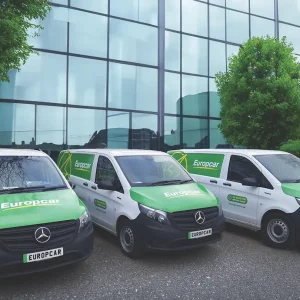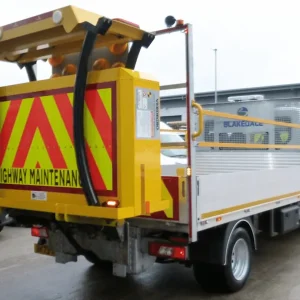
Mercedes-Benz has taken a novel approach to revealing its next-generation Sprinter van, by carving it out of stone.
‘The Boulder’ is said to give a glimpse of the future of Mercedes’ most important van, with a vehicle half-emerging from a granite block – to illustrate that the next Sprinter will be as solid as a rock.
It gives us the first clear hints of the design, proportions, and technological direction for the new van and its platform, which will be the basis for both medium and large vans.
The sculpture reveals a new shape for the Sprinter, with a flatter and boxier appearance that is more upright than the current model. Kai Sieber, Mercedes’ head of smart design, refers to it as “vertical geometry”.
Straighter looking sides and a squarer roofline are designed to maximise cargo space and make conversions easier for bodybuilders and other converters. It’s a deliberate move away from the sloping, tapered form of recent generations and closer to the utilitarian stance of the original 1995 Sprinter.
At the front, a significant portion of the grille has been revealed, which gives it a more truck-like appearance, with its smooth grille indicating that this is the design for electric versions of the van – an important detail as fundamental changes to the platform have also occurred.
Originally launched as VAN.EA (Van Electric Architecture), it was initially conceived as a pure EV base for all future Mercedes vans. The plan, made official just a year ago, was to move the Sprinter line entirely to electric power. But in a notable reversal in February this year, Mercedes has now confirmed a parallel VAN.CA (Van Combustion Architecture) version of the same platform – one capable of accommodating diesel engines.
Mercedes has engineered its electric platform backwards to take in an internal-combustion drivetrain – a different approach from the many EVs converted from ICE drivelines, but one that aims to keep its options open and its customers onboard.
The two architectures will share around 70% of their components, allowing both EV and diesel versions of the Sprinter to roll down the same production lines.
From the outside, it’s likely there will be little to distinguish them beyond the grille and badging. Under the skin both vans will use the same digital backbone, running Mercedes’ new MB.OS operating system. The cloud-connected software suite will control everything from fleet management to predictive maintenance, with AI support and over-the-air updates.
The first model built on the new platform will be the VLE passenger van in the first half of 2026, with a commercial vehicle version to follow. The next-generation Sprinter will likely arrive in 2027.





